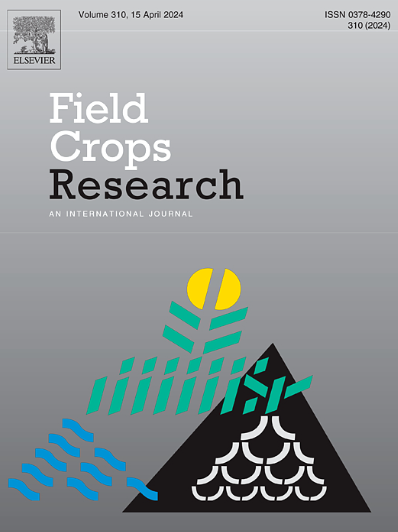Bio-based fertilisers can replace conventional inorganic P fertilisers under European pedoclimatic conditions
IF 5.6
1区 农林科学
Q1 AGRONOMY
引用次数: 0
Abstract
Mineable phosphorus (P) resources are finite and unevenly distributed globally. Recycling of P from different waste streams as bio-based fertilisers (BBFs) provides a viable option for closing nutrient cycles. To implement this approach effectively, it is necessary to evaluate the P fertiliser efficiency of BBFs under field conditions using a mechanistic approach that links their performance to their chemical composition. This study aimed to test to which extent BBFs can replace conventional inorganic P fertilisers under different pedoclimatic conditions. To this end, the same eight BBFs were tested in field experiments over two consecutive years at five different sites in Europe growing cereals and sunflower. Furthermore, the residual effect of the BBFs in a succeeding crop was investigated. We found that none of the tested P-BBFs resulted in significantly lower yield or total P uptake than triple superphosphate. Ammonium magnesium phosphate (struvite), dicalcium phosphate and phytate-based fertilisers performed best across all field experiments (mean mineral replacement values of 80 – 125 %). No consistent effect of soil or climatic conditions was found. Only marginal residual effects were observed, suggesting that longer trials with repeated applications are necessary to quantify residual effects. The fact that two out of five trial sites were not responsive to P fertilisation highlights the need to consider soil P status for the successful implementation of P fertiliser field trials as well as for fertilising recommendations. In conclusion, most tested BBFs have the potential to replace conventional inorganic P fertilisers across a range of European soils and climate.
求助全文
约1分钟内获得全文
求助全文
来源期刊

Field Crops Research
农林科学-农艺学
CiteScore
9.60
自引率
12.10%
发文量
307
审稿时长
46 days
期刊介绍:
Field Crops Research is an international journal publishing scientific articles on:
√ experimental and modelling research at field, farm and landscape levels
on temperate and tropical crops and cropping systems,
with a focus on crop ecology and physiology, agronomy, and plant genetics and breeding.
 求助内容:
求助内容: 应助结果提醒方式:
应助结果提醒方式:


